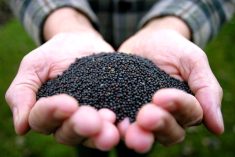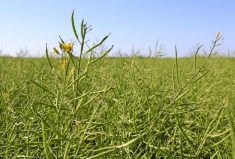CNS Canada –– The ICE Futures Canada canola market saw some large price swings during the week ended Wednesday, but ended relatively steady compared to prices seven days earlier.
The market is starting to move into a nervous spring trading pattern, which kept prices relatively rangebound and should continue for the next three to four weeks.
“Everything is really choppy right now, we have no direction whatsoever in these markets. It’s typical spring trading,” said Ken Ball of PI Financial.
“You get to a point in the spring where nobody wants to commit to anything until they see what kind of a start we can get the crops off to, so everything just starts to chop around aimlessly, and that’s the phase we’re heading into now.”
Read Also

U.S. grains: Soybean futures hover near 15-month high after China buys U.S. cargoes
Chicago Board of Trade soybean futures hovered near a 15-month high on Wednesday after trade sources said China made its first purchases from the autumn U.S. harvest ahead of a summit between leaders Donald Trump and Xi Jinping.
With spring seeding in Canada not likely to start until late April/early May, the market is expected to stay within a choppy rangebound pattern for the next few weeks.
“You may see little spurts of buying every now and then, but a lot of traders are backing away at this time of year saying ‘We’ll just back away until we see how the crops get established,'” Ball said.
Canola futures will also continue to follow U.S. oilseed markets, which are expected to remain in a choppy pattern until spring weather conditions become clearer as well. Major seeding in the U.S. is still a few weeks away, according to Ball.
If both Canadian canola and U.S. soybean crops get into the ground in a timely manner, with good conditions, and show signs of being off to a good start, North American oilseed prices are likely to soften — but it will take time for traders to react accordingly.
“Sometimes it won’t happen until June, where the markets really accept that the crops are off to a good start,” Ball said. “Then, you sometimes see some pressure starting to build.”
— Terryn Shiells writes for Commodity News Service Canada, a Winnipeg company specializing in grain and commodity market reporting.











